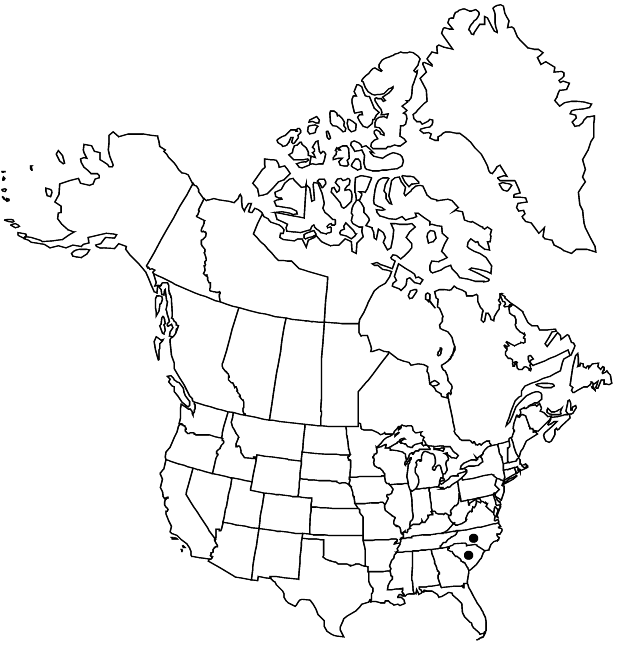Pyxidanthera brevifolia
J. Elisha Mitchell Sci. Soc. 44: 238, plate 9. 1929 ,.
Stems commonly compact and not creeping or short-creeping, sometimes elongate and creeping, hairy; internodes usually to 1 mm. Leaf blades ovate-lanceolate to obovate-lanceolate, usually 2–4 mm, slightly succulent, those of fertile shoots eciliate, adaxial surface white-pilose throughout. Flowers: calyx pinkish; corolla lobes 2–3.5 mm. 2n = 12.
Phenology: Flowering Dec–Mar.
Habitat: Xeric sandhills, usually over deep sand or sand-clay mixtures near ridgetops or on upper slopes of sandhills, usually with Pinus palustris, Quercus laevis, Q. margarettiae, Q. marilandica, and Aristida stricta
Elevation: 50-200 m
Discussion
Pyxidanthera brevifolia is known only from a six-county area in the sandhills of North Carolina and South Carolina, where it is sympatric with P. barbulata. It occurs in xeric sites upslope; P. barbulata occurs in moist sites (seepage areas or streamhead ecotones). R. B. Primack and R. Wyatt (1975) concluded that recognition of only a single taxon is justified, based on a study of seven populations in the area where the two taxa are sympatric; they found that variation in leaf length and corolla lobe length is “clinal and associated with differences in soil moisture retaining capacity and other environmental parameters.” Recent intensive surveys in this area (Nature Conservancy 1993), in contrast, indicate that putative morphological intermediates are primarily phenotypic responses of P. brevifolia to shading by leaf litter and of P. barbulata to disturbance and/or canopy removal. The two taxa are morphologically and ecologically distinct, and ecologically intermediate sites usually are rarely occupied by Pyxidanthera. The sharp divide in habitat apparently provides reproductive isolation, and the taxa are appropriately recognized at specific rank. The key features consistently separate them, essentially returning to distinctions made by A. E. Radford et al. (1968).
Selected References
None.
